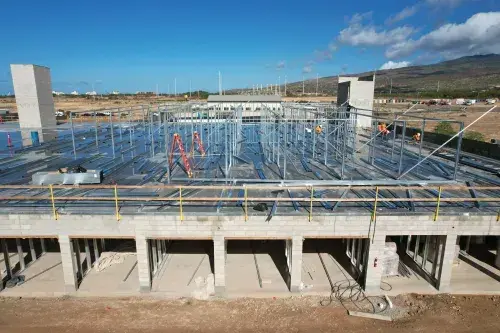3 MIN READ
Distressed Debt is Consistently Growing
- Real Estate Development
- Self Storage Industry
3 MIN READ
November 08, 2023

On October 31, 2023, the Wall Street Journal published an article titled “Commercial Real Estate Lending Slows Down”. Click here to read the online article re-titled “The Money Has Stopped Flowing in Commercial Real Estate."
‘Slow down’ is a gentle way of characterizing the current lending environment. The first two weeks in October 2023 saw decreasing bank-held commercial real estate loans. The last time this occurred was in 2014.
Banks are caught in a vicious cycle. If a bank is adequately capitalized, it makes new loans with repaid capital from existing loans. Why has this slowed? Many lenders are sidelined; rates are extremely high relative to the last ten years; loan-to-value ratios are down; and borrowers cannot refinance, leaving banks unable to make new loans.
Refinancing at today's rates and loan-to-values might require borrowers to infuse the project with additional cash. We are at a point in the cycle where rental rates are not growing at extraordinary percentages (think 20% year-over-year) as they were in 2021 and 2022, leaving so many investors frightened of making a bad decision. I have heard the phrase “catching a falling knife” from three different investors this week alone. Emotion can drive many decisions, and fear is paralyzing.
Under stress, though, there will be bright spots that emerge. Construction prices are expected to decline. This might not come in the form of reduced labor cost or cost of materials, but it could be smaller profit margins as more contractors compete for less work. There will be distress opportunities that emerge; borrowers will not be able or willing to contribute additional capital, forcing them to sell for a loss.
The WSJ article makes note of declining new development, which is obvious given that good deals turn into mediocre investments in this lending environment. Banks are generally not willing to take the loan risk on a mediocre project unless the bank fears undermining the long-term relationship with a client.
It is generally known that office real estate is facing the most challenges, and banks have a lot of existing office loans on their books. The office loans will drag down a bank's ability to lend to real estate sectors that are still stable, like self storage and industrial. We will see the lending environment continue to degrade as banks work through this vicious cycle.
The bottom line: There is less activity in commercial real estate today due to banks needing to reorganize their portfolios. Until buyers, sellers, developers, and lenders have accepted the new set of norms, only the best real estate deals will be done, as those are the only ones that continue to make sense under this lending environment.
LOAD MORE
3 MIN READ
2 MIN READ
2 MIN READ
LOAD MORE